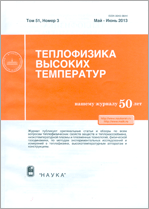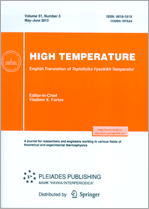|
This article is cited in 1 scientific paper (total in 1 paper)
Plasma Investigations
Specific features of the structure of a diffuse barrier discharge
M. E. Renev, Yu. F. Safronova, Yu. K. Stishkov
Saint Petersburg State University
Abstract:
Via numerical simulation, the structure and characteristics of a diffuse barrier discharge have been studied in air under atmospheric pressure in a system of planar electrodes, one of which is covered with a dielectric. Electrons, positive and negative ions, processes of ionization, recombination, attachment, detachment and photoionization, dielectric charging, and the autoemission of electrons from the electrode have been studied. To determine the structure of the diffuse barrier discharge, the voltage pulses were considered with a leading-edge time of $1$ and $100$ ns and a rate of rise of the electric-field strength of $152$ and $1.52$ kV$/($cm ns$)$ with a duration of $2$ and $500$ ns, respectively. The one-dimensional structure of the barrier discharge is described. It is similar to a streamer and is conventionally called a flat streamer: a planar wave of ionization with plasma channel located behind its front and a nonconducting gas before it. The diffusive discharge is usually opposite the streamer discharge, but this work corrects this concept. The main stages of the formation of the diffuse barrier discharge are obtained: the avalanche stages, the avalanche–streamer transition, the propagation of positive and negative heads of the streamer, the head shorting to electrodes, and the process of plasma relaxation. It is shown that the plasma relaxation process after voltage decreasing is slow and that the rate of front rise and pulse duration significantly influence the discharge structure and parameters. Considering an external electric circuit in the model restricted the current in the system and provided satisfactory quantitative agreement with experiment.
Received: 22.10.2019
Revised: 31.01.2020
Accepted: 10.03.2020
Citation:
M. E. Renev, Yu. F. Safronova, Yu. K. Stishkov, “Specific features of the structure of a diffuse barrier discharge”, TVT, 59:1 (2021), 31–40; High Temperature, 59:1 (2021), 27–35
Linking options:
https://www.mathnet.ru/eng/tvt11282 https://www.mathnet.ru/eng/tvt/v59/i1/p31
|


| Statistics & downloads: |
| Abstract page: | 159 | | Full-text PDF : | 119 | | References: | 30 |
|





 Contact us:
Contact us: Terms of Use
Terms of Use
 Registration to the website
Registration to the website Logotypes
Logotypes








 Citation in format
Citation in format 
